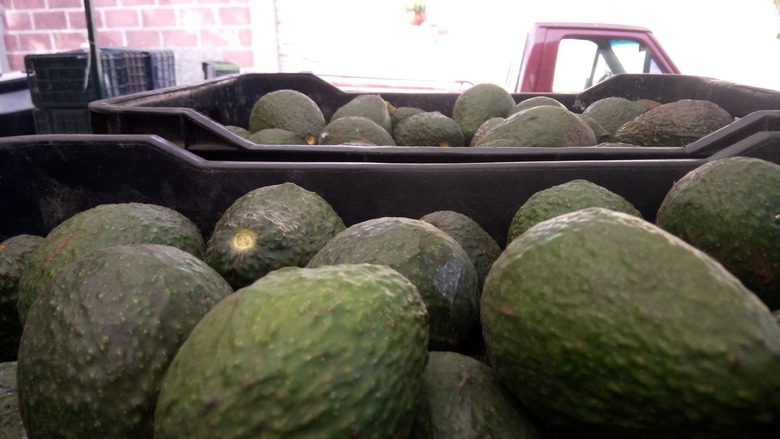How To Tell If An Avocado Tree Is Going To Bear Fruit
A mysterious aspect of avocado behavior complicates pollination, and without pollination, the tree will bear no fruit. If your avocado tree looks healthy, bushy and green, and it flowers like crazy but no fruit appears, pollination is probably the problem.
Why isn't my avocado tree producing fruit?
It will become clear over time whether your avocado tree (Persea americana; USDA zones 10 to 12) will produce fruit. While pollination is often the problem, the age of the tree is also a factor, and unfavorable growing conditions can play a part as well.
The Fascinating Pollination Dance of Avocados
Avocado flowers are classified as "perfect." This doesn't mean that they are beautiful or shapely; rather, it means that they encompass both male and female organs.
Plants with perfect flowers are capable of self-pollination—but for avocados, nature throws a curveball called "synchronous dichogamy" in which a flower opens with its male parts active, then closes, then reopens later with its female parts active.
This polite give-and-take between the female and male is complicated by whether your avocado tree has type "A" or "B" flowers. No tree has both. Further complicating pollination is that each flower rotates its opening during just a two-day cycle. It does not open again, so if pollination doesn't occur in a flower's two-day window, there is not another chance. Here's how it works.
Avocado trees have "perfect" flowers, meaning they are capable of self-pollination. Due to the timing of the opening of their male and female flowers, however, this pollination may not always happen.
Type "A" Flowers
Type A flowers open first as females in the morning of their first day. This means that the female stigma is active and ready to receive a pollen shower. Its male parts, i.e. the stamens, are inactive. After two or three hours, the flower closes up for the day, and that's it for the first day.
On the afternoon of the next day, the flower opens again, this time with its male parts active, shedding pollen in hopes of a receptive stigma somewhere.
Type "B" Flowers
Trees with type B flowers follow an pattern opposite to those with type A. Type B flowers open as females in the afternoon of the first day, then as males the next morning.
So, if you have just one tree and it can have only type A or type B, can pollination ever occur? Yes, say the experts, because temperatures can impact this cycle, delaying or accelerating the opening of a flower. For example, a type A flower could open as a female at the same time as another flower of type A is open as a male.
This is, however, not a sure thing, so the upshot is that, ideally, you want a tree of both type A and type B flowers to create good conditions for cross-pollination. How can you tell which type of tree you have? You will probably have to consult a nursery or your local university extension office, but here's how some of the most common varieties break down:
- Type A varieties: Pinkerton, Gwen, Hass, Gwen, Lamb Hass, Reed, GEM, Stewart and Harvest
- Type B varieties: Sharwil, Ettinger, Bacon, Fuerte, Sir Prize, Walter Hole, Zutano, Marvel and Nobel
Other Reasons Why an Avocado Tree May Not Bear Fruit
While pollination is usually the primary factor if your tree is not fruiting, environmental factors can also be to blame.
- **Non-ideal Temperatures:** Avocados are
famously warm-loving trees, so if you're trying to grow them in a zone colder than 10, they may not thrive, flower or fruit. Or, conversely, temps that exceed 100°F for a prolonged period can result in low fruit set or premature fruit drop.
- **Insufficient Light:** They also require full sun to set flowers, so if your spot is overly shaded, there's a good chance that lack of light is the culprit.
- **Poor Drainage:** In addition, evaluate the soil to make sure it is draining properly, an important requirement for most plants and trees.
- **Too Young:** The age of the tree is also a factor and whether it was grafted or grown from seed. If your tree is grafted, you'll get fruit in one to two years, while seedlings won't produce fruit for eight to 20 years—ouch!

